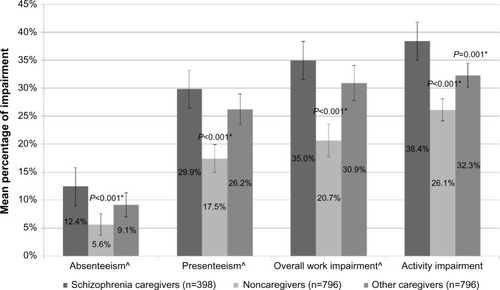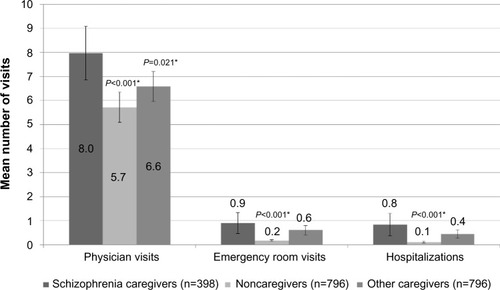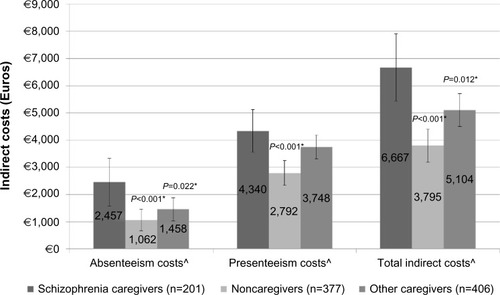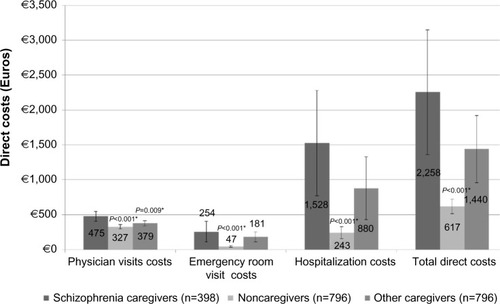Figures & data
Table 1 Respondent demographics and health characteristics by caregiver status
Figure 1 Work productivity loss and activity impairment by caregiver status post-propensity matching.
Abbreviations: BMI, body mass index; CCI, Charlson comorbidity index.

Figure 2 Proportion of emergency room visit and hospitalizations by caregiver status post-propensity matching.
Abbreviations: BMI, body mass index; CCI, Charlson comorbidity index.

Figure 3 Health care resource utilization by caregiver status post-propensity matching.
Abbreviations: BMI, body mass index; CCI, Charlson comorbidity index.

Figure 4 Indirect costs by caregiver status post-propensity matching.
Abbreviations: BMI, body mass index; CCI, Charlson comorbidity index.

Figure 5 Direct costs by caregiver status post-propensity matching.
Abbreviations: BMI, body mass index; CCI, Charlson comorbidity index; ER, emergency room.

